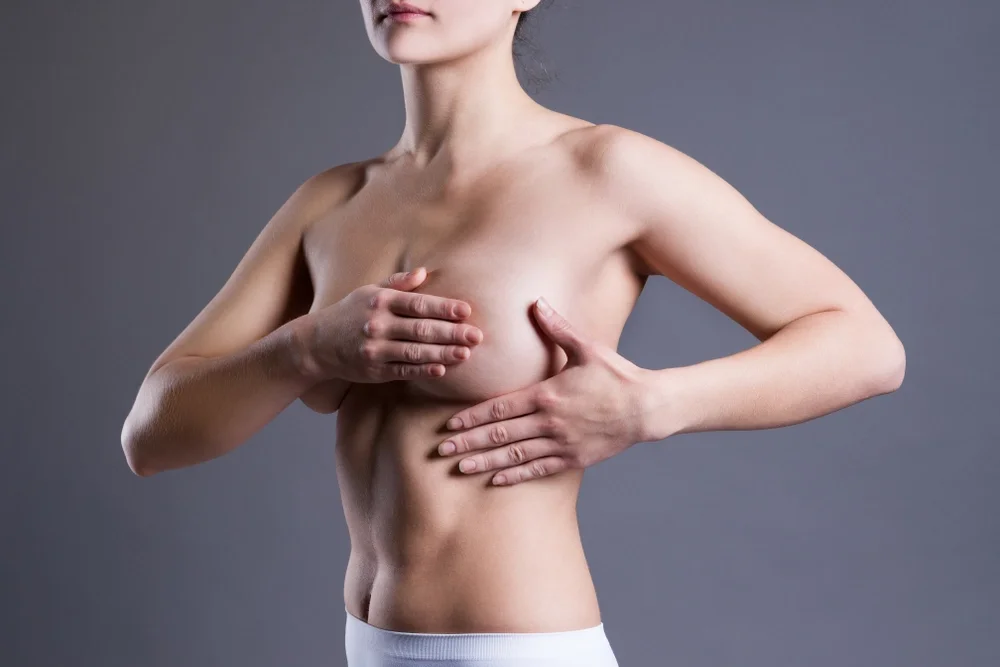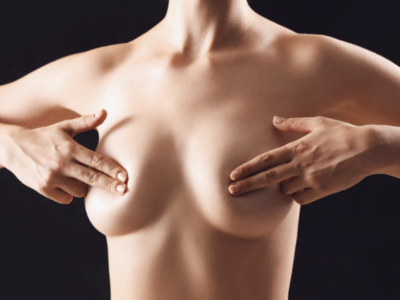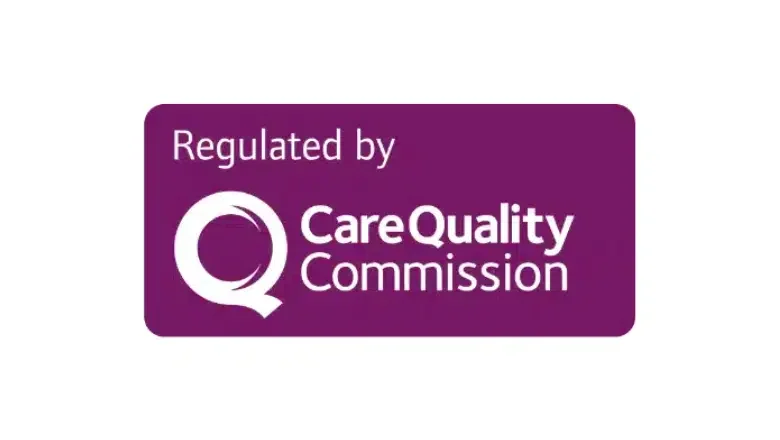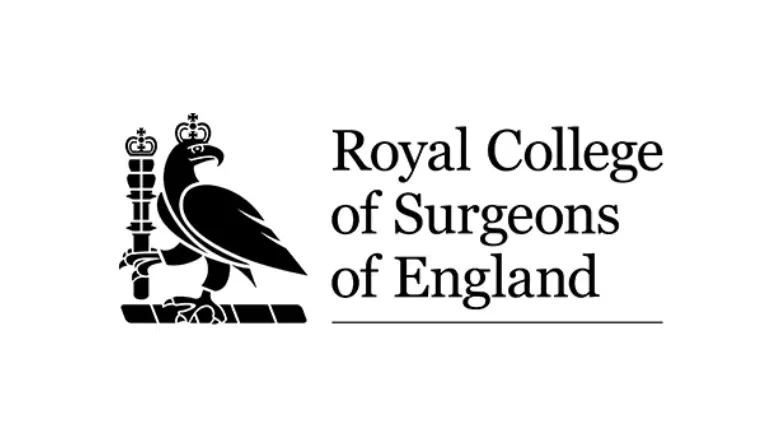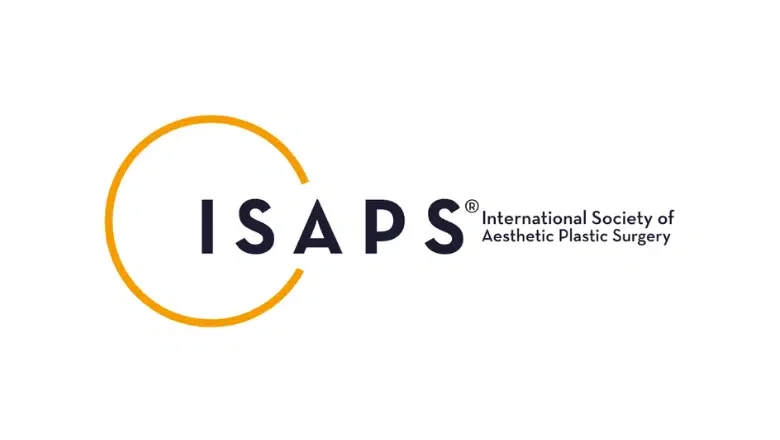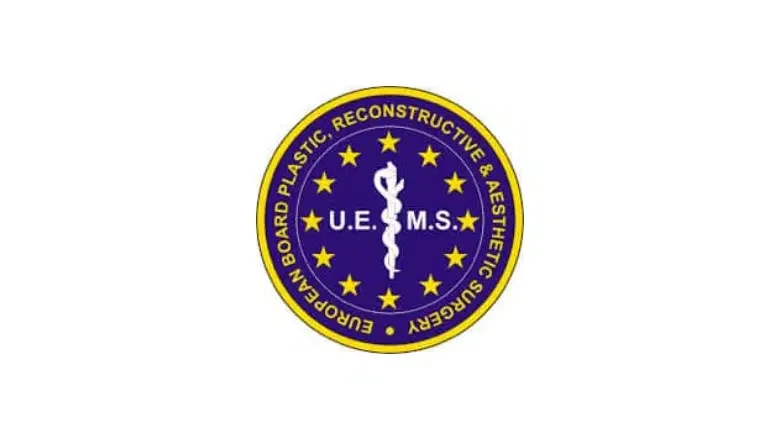Breast reconstruction in London
The female breast is a key component of emotional and mental well-being. When breasts need to be removed as part of treatment for breast cancer, this can be a significant cause of distress with a loss of confidence and a potential impact on personal relationships. Breast reconstruction surgery may also involve an implant-based reconstruction or breast augmentation and is aimed at restoring natural and aesthetically pleasing breasts, with the final result often being an enormous improvement in emotional and mental well-being.
Breast reconstruction expected results
- A natural look to the breasts
- Restoration of breast symmetry
- Improved appearance of the nipple-areola complex
- Enlargement of female breasts with a better look beneath clothing
- An improvement in self-confidence
Ideal candidates for breast reconstruction
Ideal candidates for breast reconstruction include those who have had or are soon due to have a mastectomy. Compared with treatment for breast cancer, breast reconstruction surgery is strictly not medically necessary. It is, therefore, very important for all women to make sure the procedure is being done for themselves without undue pressure from others.
The best candidates for breast reconstruction are:
- Patients who have good physical and mental health and do not have significant medical conditions
- Have a clear understanding of the breast reconstruction method recommended by your surgeon
- Have realistic expectations of what the procedure can achieve
Breast reconstruction surgical techniques
Every woman will present a unique situation when it comes to planning a breast reconstruction procedure. The specific type of breast reconstruction procedure is tailored to the individual patient. Breast reconstruction is performed under TIVA general anaesthesia and ranges in duration from one to three hours to complete. Sometimes, more complex procedures may take much longer to perform.
There are two main techniques used in breast reconstruction: implant-based reconstruction and flap-based reconstruction. The technique which your surgeon uses will be based on the physical characteristics of your breasts and your goals for treatment. In some cases, it may be necessary to perform more than one breast reconstruction procedure, which is staged to take place over a period of three to six months to achieve optimal results. The final part of breast reconstruction is to create an aesthetically pleasing nipple and areola.
Breast reconstruction can be performed either at the same time as a mastectomy procedure, or it can be performed as a delayed procedure where it is performed several months later. Sometimes, the reconstruction can be performed a year or more later. The ideal treatment approach will be determined by a patient’s overall state of health and their preferences for treatment. In cases where breast reconstruction is being performed only for one breast, then your surgeon may recommend a simultaneous breast symmetry procedure on the opposite breast. This may be a breast augmentation with an implant or fat grafting, breast lift or a breast reduction. These procedures can help to improve breast aesthetics for improved self-confidence.
Implant-based reconstruction
In an implant-based reconstruction, the breast may first require skin expansion to stretch out the skin to enable the placement of an implant. Skin expansion is the most common technique of breast reconstruction performed today. A tissue expander is surgically inserted beneath the skin and pectoralis muscle before being inflated with saline to slowly stretch the overlying skin over one to six weeks. The stretched skin facilitates the placement of a breast implant at a second stage procedure. Silicone breast implants are most commonly used.
Flap based reconstruction
In flap reconstructions, tissue and overlying skin are transferred from a nearby location, such as the abdomen, thighs or breast, to refashion a new breast mound. The tissue is to be transferred and meticulously placed in the recipient area. The surgeon may need to perform microsurgery to join up blood vessels for the newly transferred tissue flap. This is known as a free flap reconstruction. In other types of flap reconstruction, the tissue flap is tunnelled to the breast region with the existing blood supply preserved, and there is no need to perform microsurgery to rejoin the blood vessels. Once the new tissue has been transferred, a new pocket for a breast implant can be created, or a new breast mound can be made from the transferred tissue alone.
TYPES OF FLAP PROCEDURES
- Latissimus Doris Myocutaneous (LD) flap. The LD muscle located on the back is transferred to the chest to recreate a new breast mound, or a pocket is created for the insertion of an implant.
- Transverse Rectus Abdominis (TRAM) flap. A tunnelling technique transfers the rectus abdominoplasty muscle of the abdomen to the chest region. Breast implants are not required in TRAM flaps, as the robust TRAM flap provides sufficient soft tissue support to create a new breast mound.
- Deep inferior epigastric perforator (DIEP) flap. Abdominal skin and underlying fat are used to recreate breast tissue. In a DIEP flap, muscle is not removed from the abdomen.
Preparation for breast reconstruction
At Centre for Surgery, our surgeons strongly believe that the success of any surgical procedure including breast reconstruction surgery is optimised with following all of the surgeon’s pre-procedure instructions.
We always strive to go above and beyond to ensure that all our patients are optimally prepared for breast lift surgery—physically, mentally, and emotionally. Breast reconstruction surgery should be viewed as a process that may involve more than one procedure. Our team is experienced in guiding women through their journey for optimal outcomes.
Recovery after breast reconstruction
Recovery after breast reconstruction surgery should take several weeks, and it is not unusual to experience mild discomfort and tenderness of the newly reconstructed breasts. It generally takes up to six months for the wounds and breast tissue to heal fully and for any residual swelling to settle down. All women should avoid strenuous exercise and lifting heavy objects for six weeks. You should be ready to return to light work duties after about two weeks.
A degree of swelling and bruising is to be expected after breast reconstruction. Any discomfort is well controlled with prescription painkillers, which should be taken regularly in the early postoperative period. Your surgeon may have placed suction drains to remove any excess fluid, and these are usually removed between 3 and 5 days later. Postoperative compression garments should be worn continuously to reduce swelling. Sutures, if permanent, will be removed about 10-14 days after the procedure. It is expected to observe scars in the region where tissue was removed and on the newly reconstructed breast. The scars should fade over time, although they may be visible even after six months. The benefits of breast reconstruction significantly outweigh the drawbacks of having surgical scars for the vast majority of women.
Risks and potential complications of breast reconstruction
Modern breast reconstruction is a very safe and effective procedure with an established record of producing excellent outcomes in appropriately selected patients. Despite this, complications can always occur, even in the best hands. Our surgeons have years of experience performing breast reconstruction procedures of all types and complexity using the most advanced techniques. All our surgeons understand that the decision to have breast reconstruction is an extremely personal one. Your surgeon will be able to explain the potential risks of the planned reconstruction at your consultation.
Potential complications of breast reconstruction:
- Anaesthetic risks
- Bleeding and haematoma
- Surgical site infection
- Excessive scarring
- Seroma formation
- Nerve injury
- Implant complications – capsular contracture, malposition or rupture
- Flap compromise
- Fat necrosis
- Requirement for a revision procedure
FAQs
-
What is breast reconstruction?Breast reconstruction is the surgical method to restore an aesthetically pleasing breast after surgery for breast cancer or trauma. Both implant-based and flap-based reconstruction are surgical techniques used to create an aesthetically pleasing breast.
-
Can smoking and alcohol affect the results?Healing after breast reconstruction can be affected by a number of lifestyle factors such as obesity, recreational drug use, tobacco and alcohol use. The risks of complications occurring increase when patients have multiple risk factors. Smoking tobacco significantly increases the risk of wound healing complications including both delayed wound healing and wound infection. Our surgeons recommend that all patients stop all tobacco products and commence nicotine replacement therapy from at least 6 weeks before surgery. Your GP may be able to refer you to a smoking cessation service if you have difficulty stopping. Heavy alcohol intake can also lead to wound complications and should also be stopped at least one week before surgery. Your body mass index and other aspects of your medical history will be reviewed at your consultation and appropriate strategies to optimise your condition before surgery will be recommended if appropriate.
-
Can I have a mammogram after breast reconstruction surgery?After mastectomy surgery, it is not generally required for women to undergo regular breast cancer screening with mammography on the side that had surgery. Women will still need regular screening on the other breast. Although mammography is still able to be performed on on breasts that have had reconstruction, if cancer were to recur it would be more likely to occur in the chest wall or the breast skin. This can be more readily identified on a physical examination.
Mammography for patients who have had breast reconstruction should be performed in a screening unit where the radiologists have specialist expertise of reporting mammograms on theses types of patients. The presence of breast implants can obscure the images and therefore the radiographer will need to bear this in mind when properly positioning the patient for the test. -
How will I get home after breast reconstruction surgery?As per national guidelines, all patients must have a responsible adult escort to collect them after their procedure and to safely escort them home via car or taxi. You will also require someone to accompany you for the first 24 hours after your breast reconstruction surgery.
-
When will the final results be seen after breast reconstruction?Final results after breast reconstruction take time to appear but should be seen from the six-week mark after your surgery with continuous improvement as the body's healing process takes place up to 12-18 months after surgery.
What To Expect
The consultation
If you feel breast reconstruction would benefit you, we would advise you to attend for a consultation with a specialist breast surgeon at Centre for Surgery.
When you have a consultation with your surgeon, a number of measurements are taken of your breast dimensions and an assessment will be made of the nipple-areola position and the soft tissue quality. When deciding on the optimum breast reconstruction technique, your surgeon determine whether an implant-based or flap-based reconstruction is appropriate. For flap technique, a decision needs to be made on where to harvest the tissue from whether from the thighs, back or abdomen. This will be planned at your consultation.
High-resolution photos will be taken and your surgeon may also use computer digital imaging. Your surgeon will take time to discuss the important risks and potential complications of breast augmentation surgery and what you can expect in the postoperative period.
The surgeon will also take a full medical history which includes previous operations, current list of medicines taken and any potential allergies. This information will be used to decide on your fitness for the breast reconstruction procedure. If you are deemed to be a suitable candidate for surgery then we would recommend to spend a period of time to reflect on all the information given. We always recommend a minimum of a 2 week cool off period for to weigh up your options.
All our prospective patients are more than welcome to have as many follow-up consultations after their initial consultation to make sure you are fully empowered with all the information to make an informed decision for proceeding with breast reconstruction surgery at Centre for Surgery.
Before your procedure
Once you have decided that breast reconstruction is right for you, our preoperative assessment team will be in contact to prepare you for surgery.
The following are recommended actions to take:
- For 6 weeks beforehand, it is highly recommended to stop smoking as active smoking is associated with a number of risks including delayed wound healing which could result in wound infection and a possible need to have any breast implants removed.
- You should also avoid aspirin and all medicines containing aspirin for at least one week prior to the procedure.
- For 6 hours before the breast reconstruction procedure, you should refrain from eating any food or any type of drink apart from sips of clear fluid (water and tea/coffee without added milk) which is allowed for up to 2 hours before the procedure.
On the day of your procedure
Please make sure to arrive for your procedure at the booked time to avoid delays. A member of our nursing team will formally admit you for the procedure and will carry out a number of tasks including checking your vital signs and getting you changed into clinic wear. The anaesthetist will then assess you to make sure you are fit for anaesthetic and will also prescribe a number of premedications to optimise your recovery after the procedure. You will then be seen by your surgeon who will confirm the procedure to undertaken and you will sign the informed consent form. Skin marking and photos may be taken at this point.
Breast reconstruction surgery is performed under TIVA general anaesthetic and may take from two to four hours depending on complexity. Implant and flap reconstruction are the two main techniques used.
Once you have woken up from the anaesthetic, our nurses will closely monitor you for 1-3 hours afterwards to make sure you make a full recovery. Once you are assessed as fit for discharge, you will require a responsible adult escort to take you home in a car or taxi and to look after you for at least the first 24 hours after surgery.
After your procedure
After your procedure, our dedicated postoperative support team are available round the clock to answer any questions or concerns you may have. Our team will call you regularly for the first 2 weeks after your procedure to make sure your pain levels are well controlled and your healing is progressing as normal.
Any discomfort after breast reconstruction surgery usually settles down after 10-3 days after the procedure and the vast bulk of our patients are very comfortable by the end of week 1. Your doctor may recommend a period of approximately one week off work. You should minimise any excessive movements of your arms for the first 2 weeks after surgery,
You will be required to wear a well supporting surgical bra for a full 6 weeks to make sure healing is optimal and scars healing with best results. Exercise involving the upper body should be stopped for a full 6 weeks to avoid any potential implant rotation.
You will attend for a postoperative check up with one of our nursing team at 7-10 days to review your surgical wound sites and ensure proper healing is taking place. Recommendations on treatments for scar healing may be given for optimal cosmesis. At 6 weeks you will see your surgeon for a comprehensive review and make sure your results are in line with your expectations.


